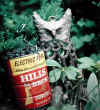| 6-16-08
It may not sound real exciting for the outdoors
set, but for little old jelly, jam and wine makers the outlook for a fairly
good crop of wild black raspberries later this month is taking on a rosy
hue. This bit of outdoor observance comes on the heels of last year’s bust
in most areas of the state.
It is a bit early to make any hard and fast forecasts
for blackberries (they bloom after black raspberries and ripen on the tail
end of that season in late June--the two overlap some). The canes of the
latter are fairly heavy with green berries now (they were questionable
two weeks ago). The green berries will turn bright red, then black to maturity
as they hit their peak.
Incidentally, a black
raspberry cobbler (you will find a modern day type recipe on my web
page, http://bayoubill.com, under “Wild Recipes”) requires only two cups
of berries, and a pie only four cups. Jelly
and jam procedures also will be found there, not to mention wine.
Actually, the old term, “Pickin' Berries,” is
a misnomer of some magnitude. In reality, the best way to fill your pail
with the sweet and succulent berries is to hold the cane steady with your
secondary hand, and hold your primary hand under clusters of berries--the
palm upward. Then, with thumb and index finger of that hand, you simply
twirl
the berries into your palm and put them into the pail. You can fill your
palm with berries before placing them in the pail.
This method of using both hands, and holding the
pail, can best be accomplished with a sturdy “S” wire hook that holds the
pail by the bail and hooks into your belt. Thus, the pail is always hanging
immediately in front of you, slightly below waist level for your convenience.
But I warn you. The maneuver requires caution to avoid spills.
In the case of many species of berries--especially
black raspberries--the white cane plants (young of the year, so to speak)
will be the host plants for next year’s crop. Treat the white canes kindly.
The older canes (purple or brown in color) are the bearers of berries.
Berries may be frozen or canned for future use.
I use berries that have been frozen for many years . . . Usually I freeze
them in two-cup packages (sandwich bags), wrapped in newspaper, after freezing.
The newspaper wrapping helps avoid freezer burn.
Another good method of freezing berries for jelly
or wine is to juice them and freeze the juice in sturdy containers. Frozen,
the juice will be useable for many years. Freezing, I am told, helps the
juices escape when they are used.
My berry-pickin' bucket
is a two-Pound Hills Brothers coffee can, (very old) with a homemade bail
of strong wire, with a hook. When it is filled (less than a gallon) I transfer
the berries into a larger pail (for storage in the shade) and start over.
FISH CHANGES--The
flood waters of streams and rivers may not show much difference in fishable
waters as summer sets in, but Bill James, chief of the department’s fisheries
section for some 30 years, says there will be changes in the waters. James
adds that the anglers are going to have to adjust.
“There will be good holes that have been filled
in by sediment, and new holes and pockets have been created (even driftwood
drifts),” James says. But, contrary to popular misconception, our fish
are not all swimming in the Mississippi River now, says James.
He does say that the bottom nesting sites of some
fish may be relocated now, adding that fish are pretty resilient.
Changes in standing waters may be more subtle,
but they may still be there. So, if one is wading in any waters, a great
way to fish now, the watchword is “CAUTION,” use a wading staff, to keep
your hat on your head . . . not floating.
NATURE NOTE--If
you see two birds together, one shaking wildly and being fed by the other
bird, it is an adult feeding a fledged young.
Adult cardinals often feed fledged cowbirds because
the female cowbirds often lay their eggs in the cardinals’ nest. They put
them in the nests of some other birds, too.
Click on thumbnail image for larger view.

|
|
This
is my berry bucket.
|
|

